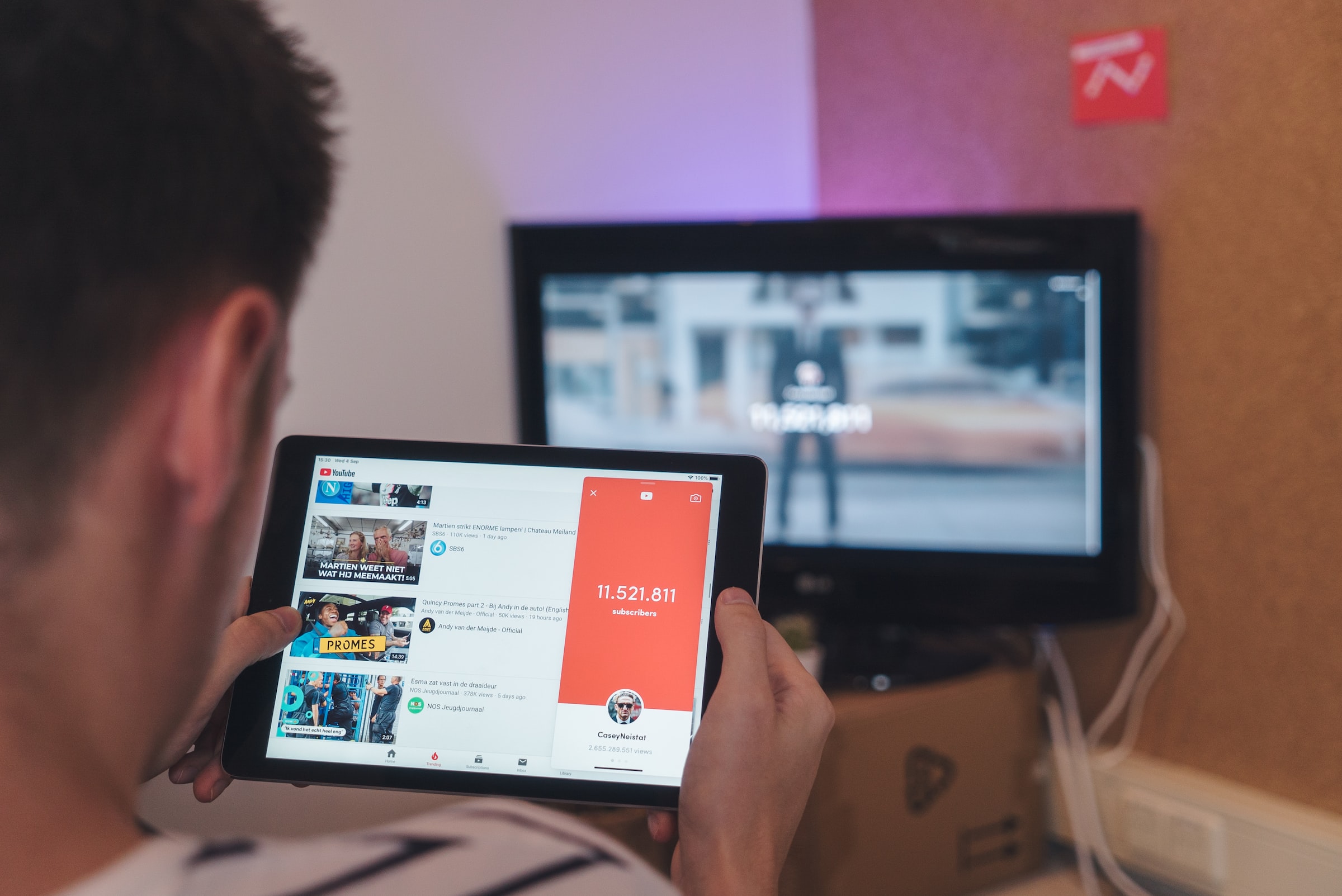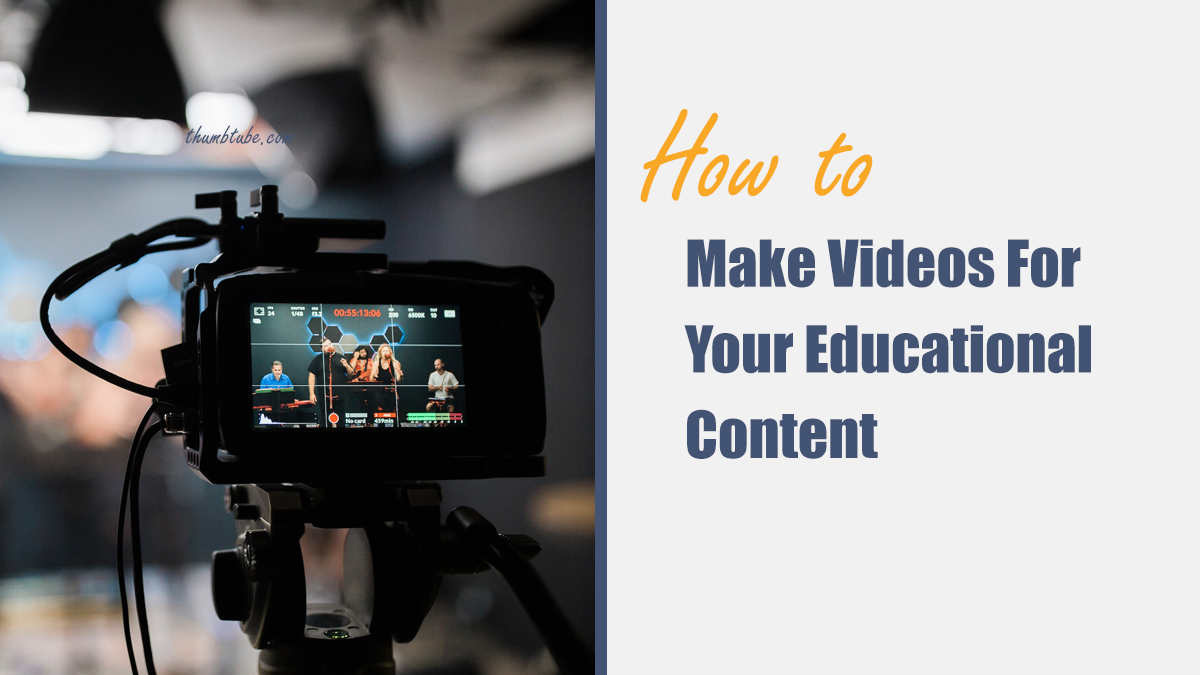Video content has become an increasingly popular tool in education in recent years. With the rise of online learning, video has become an essential medium for delivering educational content to learners of all ages. But making videos for educational content can be a daunting task, especially if you’re new to video creation. In this article, we’ll explore some tips on how to make videos for your educational content and manage your time effectively.
Plan Your Content

The first step in creating educational videos is to plan your content. Decide what topics you want to cover and how you want to present them. Think about your target audience and what they need to know to be successful in your course. Create a script or an outline that will guide your video creation process. Your script should include an introduction, a clear and concise explanation of your topic, and a conclusion that summarizes your key points. It will be valuable if you start writing your marketing plan and meantime get consultation from professionals.
Choose the Right Equipment
Once you have your content planned out, it’s time to choose the right equipment. You don’t need to spend a lot of money on equipment to create high-quality educational videos. A simple setup with a smartphone and a tripod can work just fine. If you have access to a DSLR camera or a video camera, that’s even better.
Investing in a microphone is essential for clear audio. A lapel or lav mic can be a great option for recording dialogue. If you plan on recording a lot of voiceover, consider investing in a quality USB microphone.
Education and Training
In many workplaces, employees receive training on time management and communication skills to help them be more effective in their roles. One area where training can be particularly helpful is in de-escalation techniques. De-escalation training for employees can teach them how to communicate effectively in difficult situations, such as when dealing with upset customers or colleagues. By learning how to manage their own emotions and respond calmly to others, employees can help diffuse tense situations and prevent them from escalating further. This type of training can also help employees manage their time more effectively by reducing the amount of time they spend dealing with conflicts and misunderstandings. By investing in de-escalation training for employees, organizations can improve their overall productivity and create a more positive work environment. In that case use online a platform as Archie’s software tool intended for hybrid and flexible workspaces can streamline communication and enhance collaboration among team members and can facilitate meeting processes.
Set Up Your Recording Space
The next step is to set up your recording space. Make sure you have adequate lighting and a quiet environment for recording. Natural light is best, so try to record near a window if possible. If you’re recording indoors, use a combination of ambient light and artificial light to create a well-lit space.
Make sure your recording space is free of clutter and distractions. Use a backdrop or a simple background to keep the focus on your subject.
Record Your Video
With your content planned, equipment set up, and recording space ready, it’s time to record your video. If you’re using a smartphone, use the back-facing camera for the best quality. Set your camera to record in landscape mode, and use a tripod to keep your footage steady.
Speak clearly and at a steady pace. Take breaks as needed, and don’t be afraid to redo a section if you stumble over your words or make a mistake. You can always edit out any mistakes in post-production.Follow the complete video training guide if you want to learn all the essentials of video training and how you can organize one for your colleagues.
Edit Your Video

Once you’ve finished recording your video, it’s time to edit it. Use professional video editing software to trim your footage, add transitions, and incorporate other elements like text or graphics. You can also adjust the audio levels to ensure that your voice is clear and easy to hear.
Keep your editing simple and straightforward. Don’t overdo it with too many effects or transitions. Remember, the focus should be on the content, not the editing.
Manage Your Time
Time management is a critical component of creating educational videos. There are time management statistics that will surprise you. Thus the average person spends nearly 2.5 hours per day on social media and other forms of entertainment. By managing your time effectively, you can ensure that you have enough time to create high-quality educational videos while still taking care of other responsibilities. Use a calendar or scheduling tool to block out dedicated time for video creation and stick to your schedule. This will help you stay on track and make the most of your time. Remember, time is a valuable resource, and by managing it effectively, you can create amazing educational content that will benefit your learners for years to come.
Time Efficiency and Management
Time efficiency and management are critical skills that can make a significant impact on your productivity and success. Effective time management can help you prioritize your tasks, stay organized, and meet your deadlines. It can also reduce stress and increase your overall satisfaction with your work. Why is time management Important? Poor time management can lead to missed deadlines, increased stress, and decreased productivity.
By using time management techniques such as setting goals, prioritizing tasks, and minimizing distractions, you can improve your efficiency and make the most of your time. There are great time management tips that can help you to reduce wasted time and have better management. With good time management skills, you can achieve more in less time and reach your goals faster, both in your educational video creation and other areas of your life.
Add Captions
Adding captions to your educational videos is an essential step in making them accessible to all learners. Captions make it easier for learners who are deaf or hard of hearing to follow along with your content. They also help non-native speakers who may have difficulty understanding your accent or dialect.
Many video editing software programs have built-in captioning tools that make it easy to add captions to your videos. You can also use online captioning tools like Rev or Kapwing. You can use an online tutoring platform to learn new skills online, such as improving your language skills to write and design better captions for non-native language video content.
Upload Your Video

Once you’ve finished editing and adding captions, it’s time to upload your video. There are many platforms you can use to host your educational videos, including YouTube, Vimeo, and Wistia. Each platform has its own strengths and weaknesses, so choose the one that best fits your needs.
When uploading your video, make sure to include a clear and concise title, description, and tags. This will help your video get
Final Notes
Creating educational videos requires both time management skills and effective communication. By following the tips outlined in this article, you can improve your video creation process and produce high-quality educational content that engages and inspires your learners. Remember to plan ahead, stay organized, and use tools and resources that can help you work more efficiently. Additionally, don’t underestimate the importance of effective communication in your video content, whether it’s through clear and concise narration or engaging visuals.However If you think the time is wasting make sure to hire correct VA who will help you to find some specialists to handle the deal or will help you in little tasks.
By incorporating these elements into your educational videos, you can help your learners achieve their goals and reach their full potential. Finally, investing in training for time management and communication skills, such as de-escalation techniques, can benefit both individuals and organizations by improving productivity and creating a positive work environment. With the right approach and mindset, creating educational videos can be a fulfilling and rewarding experience for both you and your learners.
